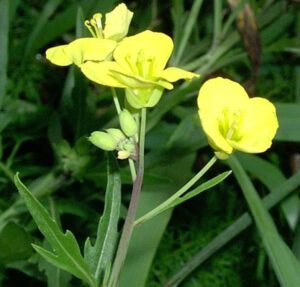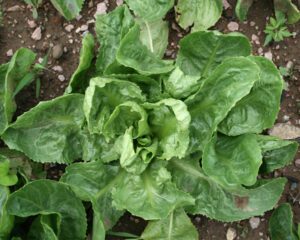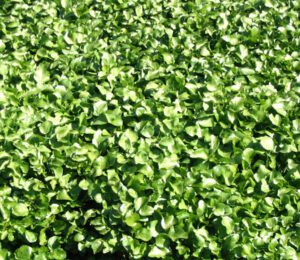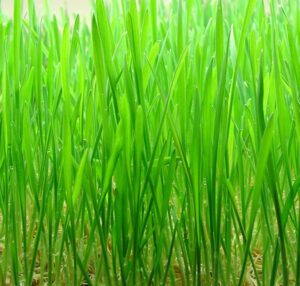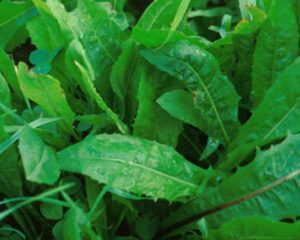Growing lamb’s quarters (Bathua) is very easy as it is a very fast-growing annual plant. Although the plant is often mistaken as a weed, but it has historically been used and cultivated as a source of food.
If you want to use this natural ingredient in your own kitchen, then you should learn more about this plant and also it’s growing system.
Lamb’s quarters (Chenopodium album) is an annual plant in the genus Chenopodium. It is available all over North America, Europe and Central Asia.
It is extensively cultivated and consumed in Northern India as a food crop, where it is called by it’s Hindi name Bathua or Bathuwa.
The lamb’s quarters is also known by many other different names in different parts around the world.
It’s other names include Melde, Goosefoot, Manure weed, Fat hen, Pigweed. It is called Paruppukkirai in Tamil, Vastuccira in Malayalam, Pappukura in Telugu, Chakvit in Konkani and Kaduoma in Kannada.
However, you can start growing lamb’s quarters organically in your home garden for enjoying this vegetable.
Leaves and young shoots of the lamb’s quarters plants may be eaten as a leaf vegetable.
It can be eaten either steamed in it’s entirety or cooked like spinach. But it should be eaten in moderation mainly due to it’s high levels of oxalic acid.
The lamb’s quarters plants produce tens of thousands of black seeds. And these seeds are high in protein, Calcium, vitamin A, potassium and phosphorus.
The lamb’s quarters plants and seeds both are also used as feed for chickens and other poultry. By the way, you can enjoy this nutritious vegetable if you start growing lamb’s quarters of your own.
How to Start Growing Lamb’s Quarters
Growing lamb’s quarters is very easy. The plants are cultivated as a grain or vegetable crop, as well as animal feed in Asia and Africa. But in Europe and North America, it is generally regarded as a weed in places such as potato fields.
The lamb’s quarters plants tend to grow upright at first and they reach height of about 10 cm to 1.5 meters. The first leaves of the plants (near the base of the plant) are toothed and roughly diamond-shaped which are 3-7 cm long and 3-6 cm broad.
But the leaves on the upper part of the flowering stems are entire and lanceolate-rhomboid (1-5 cm long and 0.4 to 2 cm broad). These leaves are waxy-coated, unwettable and mealy in appearance with a whitish coat on the underside.
However, here we are describing everything about growing lamb’s quarters in home garden from planting, caring to harvesting.
Select a Good Location
Select a good location for growing lamb’s quarters in your home garden. Although these plants are not picky to grow and will generally grow almost anywhere.
It can grow either in full sun or in partial shade. The plants can also tolerate drought well. So while selecting the site, consider availability of sun and ensure good drainage system.

Preparing the Soil
The lamb’s quarters plants can be grown in a wide range of soil types. But the plants will grow better in loose soil which is rich in organic materials.
So for preparing the soil, till the soil and add organic materials into it such as aged manure or homemade compost.
Purchase Seeds
After selecting site and preparing the soil, purchase seeds from any of your nearest market or garden centers. Lamb’s quarters plants are common in most areas and the seeds should be easily available in your area.
You can also consider ordering the seeds online. Always try to purchase good quality seeds for growing lamb’s quarters in your home garden.
Best Time for Growing Lamb’s Quarters
The lamb’s quarters is an annual plant and it can be grown throughout the year. But in India, the plants are found abundantly in the winter season.
Planting
The lamb’s quarters plants are grown from seeds. The transplants don’t do well, so you should sow the seeds directly into the soil.
Just scatter the seeds over soil and then mulch lightly with straw or grass clippings.
Water the bed and keep it moist until they are started. You can thin the seedlings later once they reach 4-6 inches in height.
Caring
You don’t have to think much about caring the lamb’s quarters plants. The plants generally require less care and they can thrive in almost all conditions.
They can handle drought well, grow in full sun or partial shade and can do well in both poor and rich soil. Although taking additional care will ensure good growth of the plants.
Lamb’s quarters plants don’t require applying additional fertilizers if you prepare the soil by adding organic materials into it.
You can water the plants if the soil gets really dry. Using mulch will help to retain moisture into soil and it will also prevent most of the weeds from the garden.
Pests and Diseases
Pests and diseases are less for growing lamb’s quarters plants. It is vulnerable to leaf miners, making it a useful trap crop as a companion plant.
It attracts leaf miners while growing near other plants, which might otherwise have attacked the crop to be protected. It is also a host plant for the beet leafhopper, an insect which transmits curly top virus to beet crops.
Harvesting
Both greens and seeds of the lamb’s quarters plants are edible. The greens are much better on younger plants. While harvesting greens, just pull the leaves off at the stem (at the base of the plant).
Hold the stem with one hand, use the fingers of your other hand to gently pluck the leaves free. But for harvesting the seeds, simply bend the seed heads over your bucket or bag and give them a good shake. Most of the mature seeds should fall after shaking.
These are the common ways for growing lamb’s quarters in your home garden. Hope you have enjoyed this guide. Good luck & happy gardening 🙂

